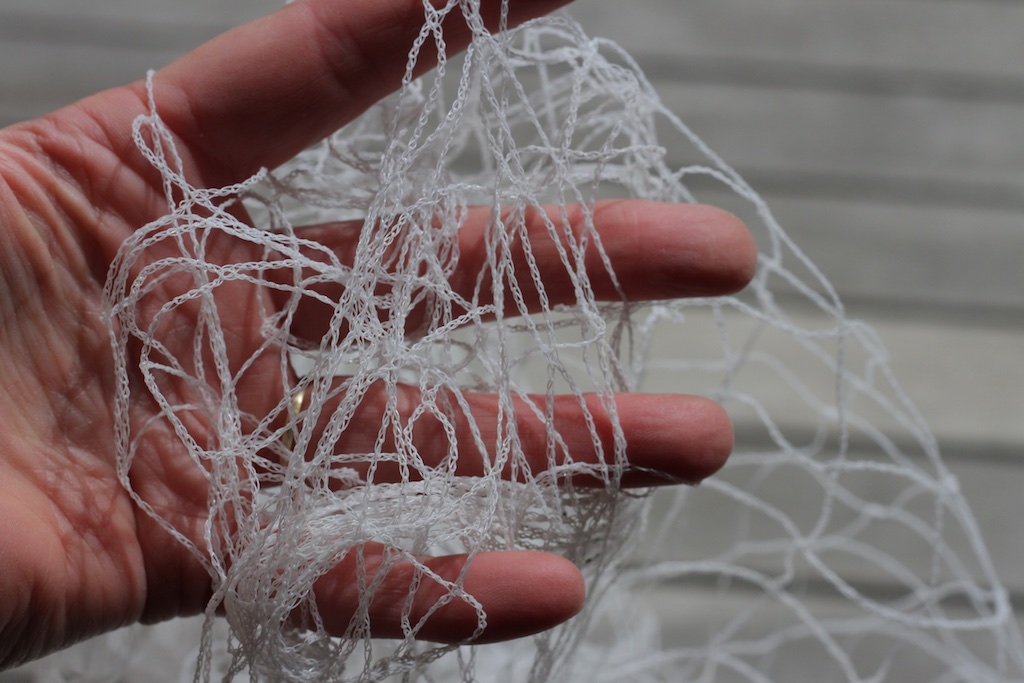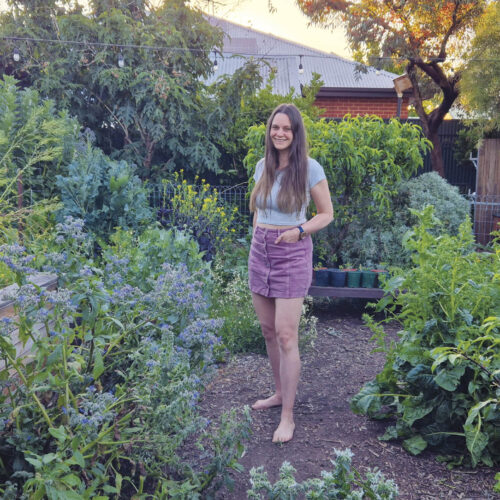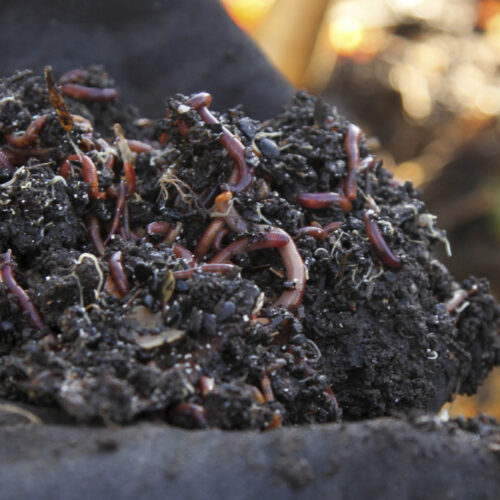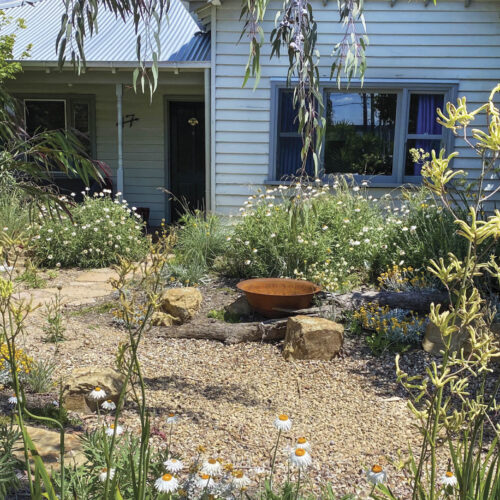Netting fruit
2018-12-19T03:10:50+11:00
Penny Woodward explains that now is the perfect time to net or bag your fruit.
With nectarines and peaches as well as apples and pears and so many other fruit, developing rapidly on our trees, now is the perfect time to look at netting or bagging the fruit. This will help you to protect them from possums, fruit bats, rats and birds. If you don’t, you’re unlikely to have any produce left to eat fresh, or bottle, or make into jams, chutneys, relishes or dried fruit.
If you are using nets then there’s a few rules it’s essential to follow:
Only use white nets, they are more easily seen.
Only use nets with fine holes so you are not trapping birds, lizards and mammals in the net holes. As a general guide, if you can fit your fingers through the holes, then the holes are too big (see the picture). The holes should be less than 5mm. There are new regulations in Victoria — worth everyone reading.
Only use nets that don’t stretch.
Once you have finished with a net, fold if up and carefully stow it away. Nets left lying around can be fatal to native animals too.
To avoid damaging the tree, make a frame over the tree to stop the net touching the branches. For my bigger trees, I use electrical conduit to construct the frame.
1. Hammer in four stakes about 1.5m long, half a metre into the ground, equally spaced around the outside of the tree.
2. Then join together enough conduit pipe to reach from one stake, over to the opposite stake, over the top of the tree.
3. Gaffer tape one end to the first stake, carefully bend the conduit over the tree and gaffer tape to the opposite stake.
4. Do the same for the other two stakes, and use gaffer tape to hold the pipes together at the apex where they cross.
5. You now have a lovely smooth frame over which to pull the net. Anchor the base of the net to the ground using bent metal pins (metal coat hangers are great) or just weight them down with bricks or bits of timber.
For smaller trees, you can use plastic irrigation pipe. This pipe is more flexible and tends to collapse when used for big trees, when the arch created is too big.
Netting sleeves, waxed paper bags, fabric bags and netting bags made from recycled plastic are all good for protecting some fruit if you want to leave some for your garden residents to eat, but they can be a bit hit and miss as fruit eaters have been known to simply chew through them.
I use a combination of nets and bags to protect my fruit, and some vegies, like tomatoes (and yes I know that some people see tomatoes as a fruit, to me they are a vegetable!).






